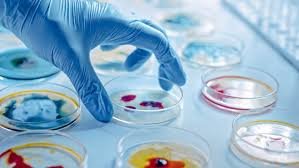Best Practices in Pharmaceutical Microbiology Laboratory.

Best Practices in Pharmaceutical Microbiology Laboratory
-
Facility & Environment
-
Maintain controlled cleanroom environments with appropriate classification (ISO/GMP requirements).
-
Ensure unidirectional personnel and material flow to minimize contamination risk.
-
Use validated HVAC systems with proper differential pressure, temperature, and humidity control.
-
-
Personnel Practices
-
Strict adherence to gowning procedures (sterile garments, gloves, masks, goggles).
-
Regular training in aseptic techniques, data integrity, and contamination control.
-
Avoid unnecessary talking, movement, or activity inside controlled areas.
-
-
Sample Handling & Testing
-
Use validated microbiological methods (Sterility, BET, Environmental Monitoring, Microbial Limits).
-
Maintain proper sample traceability and chain of custody.
-
Use aseptic techniques during sample preparation and transfers.
-
-
Good Documentation Practices (GDP)
-
Record data contemporaneously, legibly, and accurately.
-
Follow ALCOA+ principles (Attributable, Legible, Contemporaneous, Original, Accurate, + Complete, Consistent, Enduring, Available).
-
Avoid overwriting or use of correction fluids; correct errors with a single line and initials.
-
-
Instrument & Equipment Control
-
Regular calibration, qualification (IQ/OQ/PQ), and preventive maintenance of autoclaves, incubators, LAF, biosafety cabinets, etc.
-
Routine monitoring of critical utilities (water, compressed air, gases).
-
Use only validated and sterile consumables/media.
-
-
Environmental Monitoring
-
Establish an EM program covering viable (settle plates, active air sampling, surface swabs) and non-viable (particle counters) methods.
-
Trend analysis of microbial counts for early detection of contamination.
-
Investigate excursions promptly with CAPA implementation.
-
-
Aseptic Practices & Sterility Assurance
-
Routine media fill/aseptic process simulations to qualify personnel and processes.
-
Strict segregation of sterile and non-sterile activities.
-
Use validated sterilization methods (moist heat, dry heat, filtration).
-
-
Contamination Control Strategy (CCS)
-
Identify potential contamination sources and implement risk-based controls.
-
Periodic review of cleaning/disinfection agents to prevent microbial resistance.
-
Routine monitoring of disinfectant efficacy.
-
-
Data Integrity & Compliance
-
Ensure computerized systems used in microbiology are validated (21 CFR Part 11 compliance).
-
Access control with audit trails enabled.
-
Regular internal audits to check compliance with GMP and regulatory guidelines.
-
-
Continuous Improvement
-
Conduct periodic training refreshers and mock audits.
-
Implement risk assessments (FMEA, HACCP) for new methods/processes.
-
Foster a culture of quality, safety, and accountability.
-
🎓 Discover one of the best Pharmaceutical Microbiology course available —click below to explore the course that’s shaping future Microbiology course skills.

